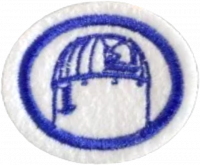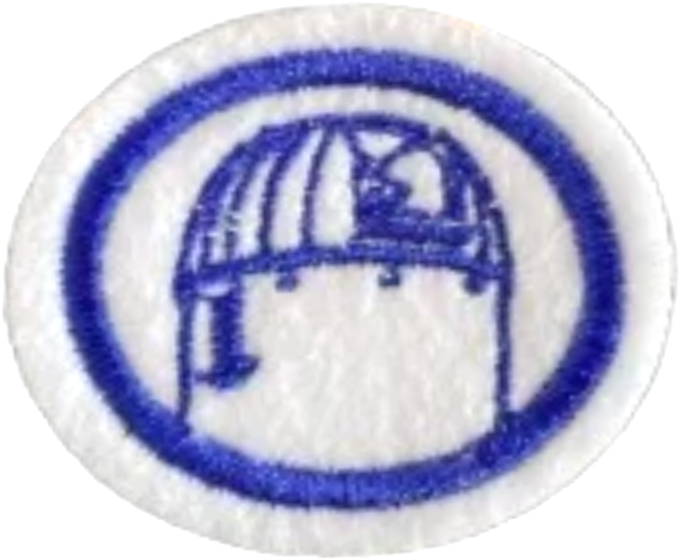Difference between revisions of "AY Honors/Planetary Science/Requirements"
From Pathfinder Wiki
< AY Honors | Planetary ScienceAY Honors/Planetary Science/Requirements
(+ Reqs. for Planetary Science AY Honor (SAD)) |
(Marked this version for translation) |
||
| Line 2: | Line 2: | ||
<section begin=Body /> | <section begin=Body /> | ||
| − | <b>1. <section begin=req1 /><noinclude><translate></noinclude>Have the Stars Honor. | + | <b>1. <section begin=req1 /><noinclude><translate><!--T:1--> |
| + | </noinclude>Have the Stars Honor. | ||
<noinclude></translate></noinclude><section end=req1 /></b> | <noinclude></translate></noinclude><section end=req1 /></b> | ||
| − | <b>2. <section begin=req2 /><noinclude><translate></noinclude>What are the three classically used units of measurement for astronomical distance? | + | <b>2. <section begin=req2 /><noinclude><translate><!--T:2--> |
| + | </noinclude>What are the three classically used units of measurement for astronomical distance? | ||
<noinclude></translate></noinclude><section end=req2 /></b> | <noinclude></translate></noinclude><section end=req2 /></b> | ||
| − | <b>3. <section begin=req3 /><noinclude><translate></noinclude>What is the name and size of the galaxy we live in? What is the closest galaxy to ours? | + | <b>3. <section begin=req3 /><noinclude><translate><!--T:3--> |
| + | </noinclude>What is the name and size of the galaxy we live in? What is the closest galaxy to ours? | ||
<noinclude></translate></noinclude><section end=req3 /></b> | <noinclude></translate></noinclude><section end=req3 /></b> | ||
| − | <b>4. <section begin=req4 /><noinclude><translate></noinclude>What is a cosmic cloud and what is its relationship with the formation of new stars and planets? | + | <b>4. <section begin=req4 /><noinclude><translate><!--T:4--> |
| + | </noinclude>What is a cosmic cloud and what is its relationship with the formation of new stars and planets? | ||
<noinclude></translate></noinclude><section end=req4 /></b> | <noinclude></translate></noinclude><section end=req4 /></b> | ||
| − | <b>5. <section begin=req5 /><noinclude><translate></noinclude>What is the Oort Cloud? | + | <b>5. <section begin=req5 /><noinclude><translate><!--T:5--> |
| + | </noinclude>What is the Oort Cloud? | ||
<noinclude></translate></noinclude><section end=req5 /></b> | <noinclude></translate></noinclude><section end=req5 /></b> | ||
| − | <b>6. <section begin=req6 /><noinclude><translate></noinclude>Give the following characteristics of the planets in the solar system: | + | <b>6. <section begin=req6 /><noinclude><translate><!--T:6--> |
| + | </noinclude>Give the following characteristics of the planets in the solar system: | ||
<noinclude></translate></noinclude><section end=req6 /></b> | <noinclude></translate></noinclude><section end=req6 /></b> | ||
| − | :<b>a. <section begin=req6a /><noinclude><translate></noinclude>Sidereal revolution | + | :<b>a. <section begin=req6a /><noinclude><translate><!--T:7--> |
| + | </noinclude>Sidereal revolution | ||
<noinclude></translate></noinclude><section end=req6a /></b> | <noinclude></translate></noinclude><section end=req6a /></b> | ||
| − | :<b>b. <section begin=req6b /><noinclude><translate></noinclude>Relative gravity | + | :<b>b. <section begin=req6b /><noinclude><translate><!--T:8--> |
| + | </noinclude>Relative gravity | ||
<noinclude></translate></noinclude><section end=req6b /></b> | <noinclude></translate></noinclude><section end=req6b /></b> | ||
| − | :<b>c. <section begin=req6c /><noinclude><translate></noinclude>Number of moons | + | :<b>c. <section begin=req6c /><noinclude><translate><!--T:9--> |
| + | </noinclude>Number of moons | ||
<noinclude></translate></noinclude><section end=req6c /></b> | <noinclude></translate></noinclude><section end=req6c /></b> | ||
| − | <b>7. <section begin=req7 /><noinclude><translate></noinclude>What is the importance of meteorites for the study of the universe? | + | <b>7. <section begin=req7 /><noinclude><translate><!--T:10--> |
| + | </noinclude>What is the importance of meteorites for the study of the universe? | ||
<noinclude></translate></noinclude><section end=req7 /></b> | <noinclude></translate></noinclude><section end=req7 /></b> | ||
<section begin=challenge /> | <section begin=challenge /> | ||
| − | <b>8. <section begin=req8 /><noinclude><translate></noinclude>Using a telescope (which can be homemade or built from a kit), survey the night sky and identify the visible planets. | + | <b>8. <section begin=req8 /><noinclude><translate><!--T:11--> |
| + | </noinclude>Using a telescope (which can be homemade or built from a kit), survey the night sky and identify the visible planets. | ||
<noinclude></translate></noinclude><section end=req8 /></b> | <noinclude></translate></noinclude><section end=req8 /></b> | ||
<section end=challenge /> | <section end=challenge /> | ||
<section end=Body /> | <section end=Body /> | ||
Latest revision as of 16:01, 27 October 2025
1. Have the Stars Honor.
2. What are the three classically used units of measurement for astronomical distance?
3. What is the name and size of the galaxy we live in? What is the closest galaxy to ours?
4. What is a cosmic cloud and what is its relationship with the formation of new stars and planets?
5. What is the Oort Cloud?
6. Give the following characteristics of the planets in the solar system:
- a. Sidereal revolution
- b. Relative gravity
- c. Number of moons
7. What is the importance of meteorites for the study of the universe?
8. Using a telescope (which can be homemade or built from a kit), survey the night sky and identify the visible planets.



